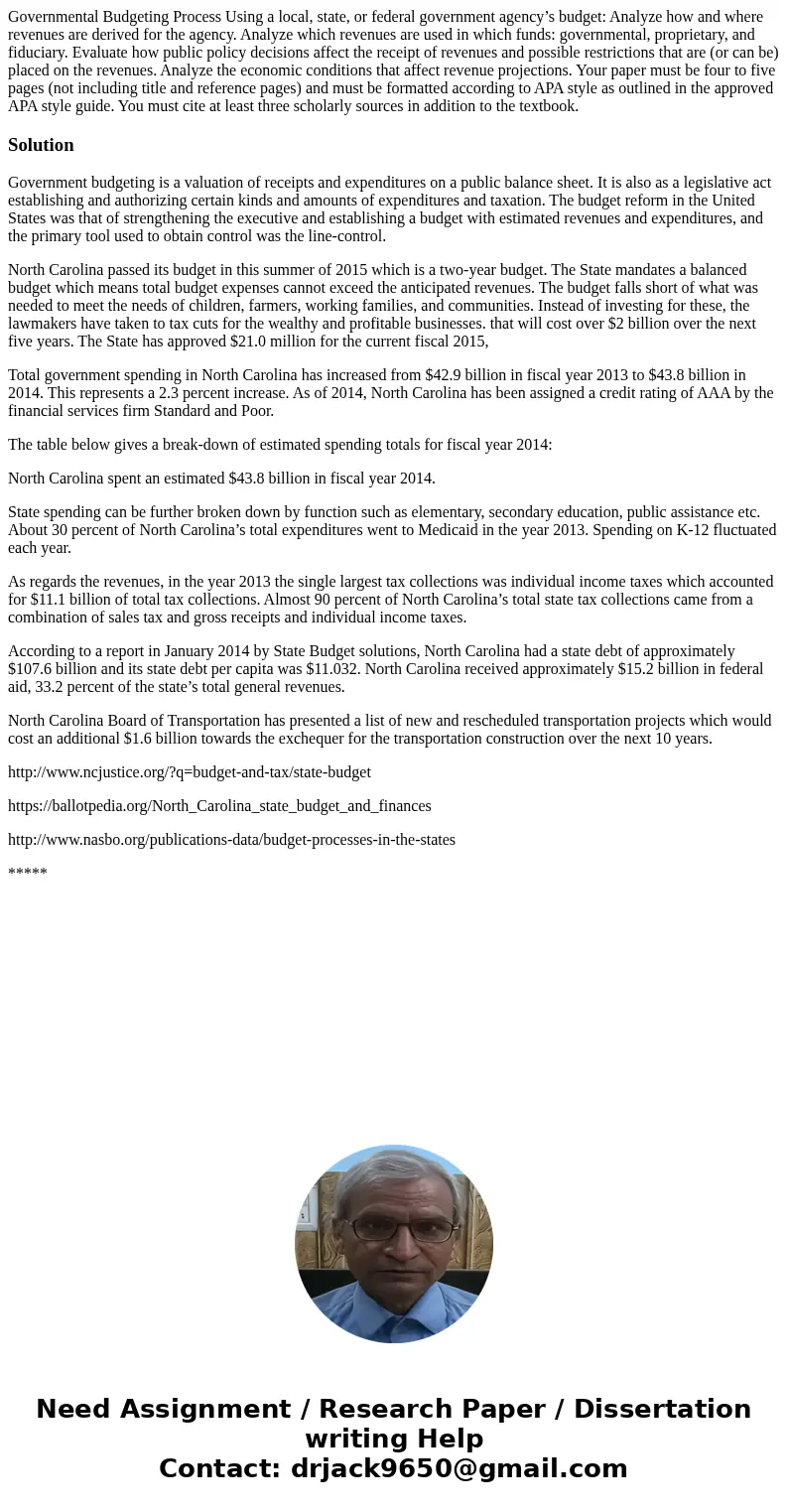Governmental Budgeting Process Using a local state or federa
Governmental Budgeting Process Using a local, state, or federal government agency’s budget: Analyze how and where revenues are derived for the agency. Analyze which revenues are used in which funds: governmental, proprietary, and fiduciary. Evaluate how public policy decisions affect the receipt of revenues and possible restrictions that are (or can be) placed on the revenues. Analyze the economic conditions that affect revenue projections. Your paper must be four to five pages (not including title and reference pages) and must be formatted according to APA style as outlined in the approved APA style guide. You must cite at least three scholarly sources in addition to the textbook.
Solution
Government budgeting is a valuation of receipts and expenditures on a public balance sheet. It is also as a legislative act establishing and authorizing certain kinds and amounts of expenditures and taxation. The budget reform in the United States was that of strengthening the executive and establishing a budget with estimated revenues and expenditures, and the primary tool used to obtain control was the line-control.
North Carolina passed its budget in this summer of 2015 which is a two-year budget. The State mandates a balanced budget which means total budget expenses cannot exceed the anticipated revenues. The budget falls short of what was needed to meet the needs of children, farmers, working families, and communities. Instead of investing for these, the lawmakers have taken to tax cuts for the wealthy and profitable businesses. that will cost over $2 billion over the next five years. The State has approved $21.0 million for the current fiscal 2015,
Total government spending in North Carolina has increased from $42.9 billion in fiscal year 2013 to $43.8 billion in 2014. This represents a 2.3 percent increase. As of 2014, North Carolina has been assigned a credit rating of AAA by the financial services firm Standard and Poor.
The table below gives a break-down of estimated spending totals for fiscal year 2014:
North Carolina spent an estimated $43.8 billion in fiscal year 2014.
State spending can be further broken down by function such as elementary, secondary education, public assistance etc. About 30 percent of North Carolina’s total expenditures went to Medicaid in the year 2013. Spending on K-12 fluctuated each year.
As regards the revenues, in the year 2013 the single largest tax collections was individual income taxes which accounted for $11.1 billion of total tax collections. Almost 90 percent of North Carolina’s total state tax collections came from a combination of sales tax and gross receipts and individual income taxes.
According to a report in January 2014 by State Budget solutions, North Carolina had a state debt of approximately $107.6 billion and its state debt per capita was $11.032. North Carolina received approximately $15.2 billion in federal aid, 33.2 percent of the state’s total general revenues.
North Carolina Board of Transportation has presented a list of new and rescheduled transportation projects which would cost an additional $1.6 billion towards the exchequer for the transportation construction over the next 10 years.
http://www.ncjustice.org/?q=budget-and-tax/state-budget
https://ballotpedia.org/North_Carolina_state_budget_and_finances
http://www.nasbo.org/publications-data/budget-processes-in-the-states
*****

 Homework Sourse
Homework Sourse